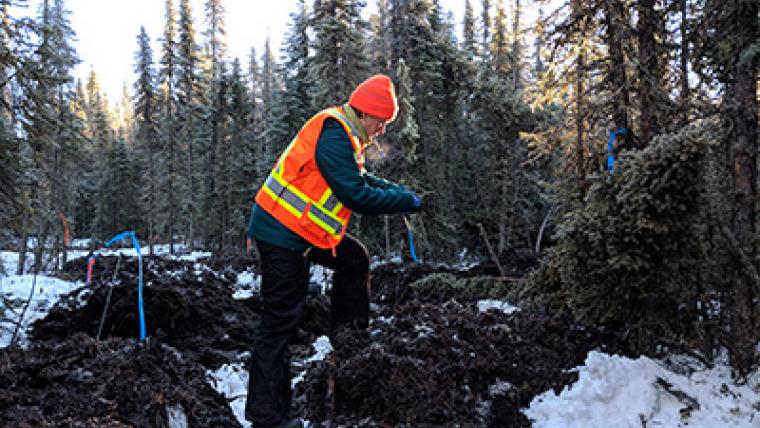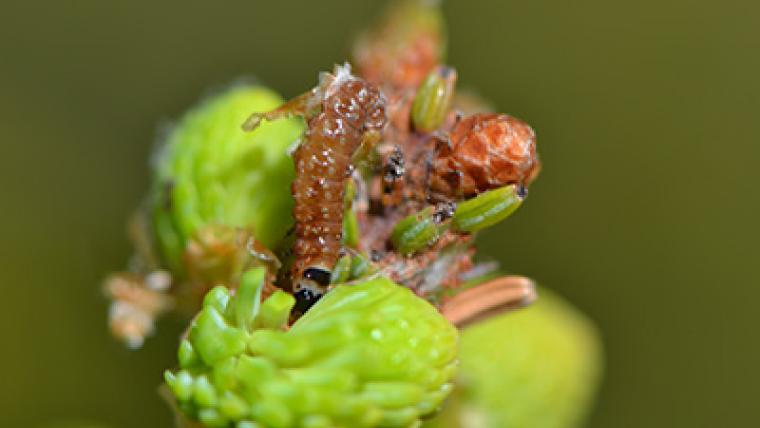A Simply Science top ten reveal: Canada’s most beautiful moth species
July 2022
Ahhhh…. It’s summertime, and the outdoors is calling your name. It’s all there: flowers, sunshine, long days, warm nights — and insects. But before you shoo them away, remember: some of them are quite beneficial, and even crucial, since they provide food for many animals, pollinate plants and flowers, and keep our soil healthy. But in the wide and wild world of insects, not all are created equal.
Take butterflies and moths, for instance. Did you know that moth species outnumber butterflies by almost 10 to one? There are more than 150,000 species of moths in the world, and about 5,000 of these are found in Canada. Yet they often play second fiddle to their more celebrated far fewer relatives, the butterfly. In total, about 180,000 species of lepidopterans — that’s butterflies and moths combined — have been scientifically described. And with hundreds more discovered every year, entomologists believe the total number of lepidopteran species in the world is probably closer to 300,000, and even possibly as high as 500,000.
Canada’s most beautiful moth species. Left to right, top row: Primrose Moth (Schinia florida), Owl-eyed Bird Dropping Moth (Cerma cora), Twin-spotted Sphinx (Smerinthus jamaicensis), Virgin Tiger Moth (Apantesis virgo) and the Ornate Bella Moth (Utetheisa ornatrix).
Bottom row: North American Luna Moth (Actias luna) Christian Grenier, Cecropia (Hyalophora cecropia) Christian Grenier, Comstock’s Sallow (Feralia comstocki) Ellyne Geurts, St. Lawrence Tiger Moth, (Arctia Parthenos) Allan Harris and Harris’ Three Spot (Harrisimemna trisignata) Allen Woodliffe. All photos: iNaturalist. Allan Harris, Nancy Mullin, kcthetc1, Christian Grenier, Ellyne Geurts, Tracy Sherbrook.
Moths: myth vs. reality
Moths have long had a reputation as being a brown and hairy nighttime nuisance. Let’s just get that myth out of the way! Some are just as colourful — and as vital — as butterflies. To set the record straight and to celebrate the significant role moths play in our ecosystems, Natural Resources Canada (NRCan) research scientist in forest ecology Yan Boulanger posed the question on social media: “What is the most beautiful moth species in Canada?”
First, though, he narrowed down the list of 5,000 species to the 40 that could be classified as beautiful to keep the Saturniidae, the Giant Silk Moth family, from being overrepresented, since they are usually singled out as being beautiful. He also tried to select species found from one ocean to another to prevent any part of Canada from having an advantage.
The response was swift — nearly 100,000 “likes” were registered — and the results were close. They say beauty is in the eye of the beholder, so without further ado, here are Canada’s top ten most beautiful moths as chosen by social media users. What do you think? Which one is your favourite? ***DISCLAIMER: this is NOT a scientific poll***
Which one will reign supreme?
Click on the image above to watch:
The most beautiful moth species in Canada as chosen on social media
photos: iNaturalist
Moths in the coal mine?
So yes, moths can be beautiful. But they’re also under stress. We’ve all heard of the “canary in the coal mine” metaphor warning of serious danger to come. The same could be said about moths in our eco systems as they reflect the health of our planet. It’s telling that around the world, even though new species are being identified, moth populations in general are decreasing due to habitat destruction and climate change. As temperatures rise, moths in some areas are emerging from their pupa too early, even before the flowers whose nectar they feed on are blooming. Without nectar for food, they can’t survive. And their declining numbers mean there are fewer of them to pollinate trees and flowers, a result that leads directly to further and much wider ecological consequences.
Experts meanwhile are working hard to understand more. Another NRCan research scientist, Joe Bowden, is collaborating with Parks Canada to build a network of Moth Walls — simple white boards with lights on them that attract moths at night — at national parks across Atlantic Canada so that the public can better appreciate their numbers, variety and contributions to local ecosystems. And as well as raising awareness, Joe is also collecting important research data. Determining the number and species of moths in our forests and monitoring their flight times help researchers track the effects of climate change and other forest disturbances.
How you can help
Now that you’re no longer in the dark about moths, here are a couple of ways you can help them. A good first step is to plant a moth-friendly garden with good nectar sources like honeysuckle and evening primrose to attract these after-hour pollinators.
Many people also volunteer as citizen scientists to keep track of the moths they encounter. The actual data collection is not complicated at all! Just hang a sheet outdoors away from other artificial lights on a calm evening and shine a light on it. Any light source will work, but you’ll attract the greatest number and diversity of moths with a bright light or any UV source, such as a black light. Make sure the sheet is well-lit, then all you have to do is sit back and wait. Once the moths start landing, take photos and upload them to one of several species data websites or with apps like iNaturalist, the Canadian branch of a global community for naturalists.
So the next time you see a “pesky brown moth” fluttering around your yard, you may want to celebrate it — or at least appreciate it — instead of shooing it away.
More about Joe Bowden’s work on ResearchGate
More about Yan Boulanger and his work
National Moth Week
Moth Walls: living placards for biodiversity
iNaturalist Canada: a community for naturalists
Page details
- Date modified:


